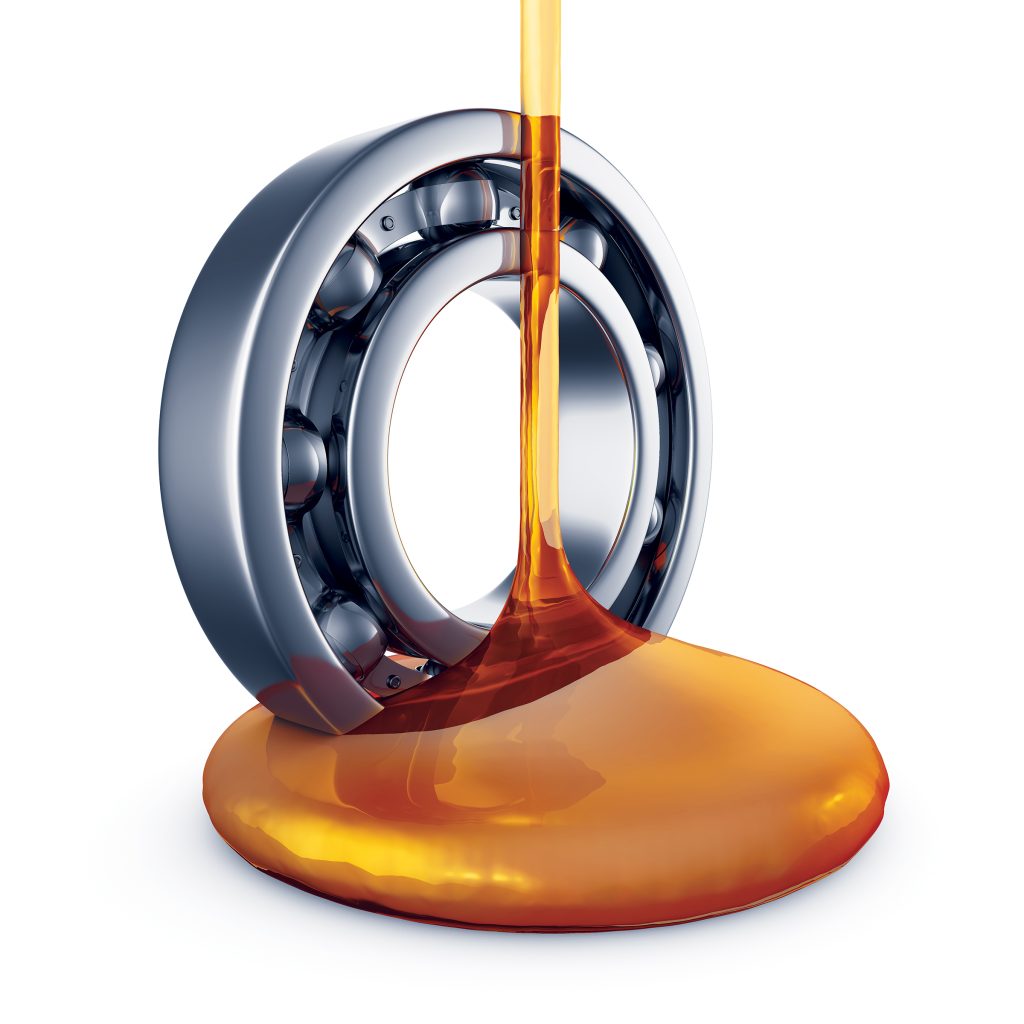
Lubrication of hybrid bearings
The lubrication of ceramic bearings, what does this mean?
April 4, 2022 | By Douglas Martin
 Photo: rommma / iStock / Getty Images Plus
Photo: rommma / iStock / Getty Images Plus

Photo: rommma / iStock / Getty Images Plus
A main issue is understanding the meaning of grease life. Grease life is defined as the point in time where the grease is no longer able to lubricate the bearing. By knowing grease life, we can determine the frequency by which a bearing should be re-lubricated. We do not want to wait until the last minute to re-grease a bearing, rather we choose to do it long before it is unable to do its job.
There is a general calculation method presented in many bearing manufacturers documentation, which calculates the replenishment point, which is the L1 life of the grease (the length of time that one can have 99 per cent confidence that the grease in the bearing is still functional). At this time, we feed the bearing with a specific volume based on the bearing size with the intent of pushing out any old grease in the bearing and replacing it with fresh grease.
The grease life will also give us a basis of the functional life of a sealed bearing. The general practice is to set the sealed bearing life in the same fashion as the fatigue life, in that we have a 90 per cent confidence level that a population of bearing will continue to run after this time is reached. Of course, when the grease is no longer able to lubricate, then bearing failure occurs. This differs from the traditional L10 fatigue life that most people know about. The L10 fatigue life predicts with 90 per cent confidence that a population of bearings will not suffer a failure from sub-surface fatigue. Of specific note: the calculated “life” of a sealed bearing is either the grease life or the fatigue life, whichever is a lower value.
There is certainly a value to knowing how a hybrid bearing will perform compared to a traditional, all-steel bearing, especially since the hybrid bearings come at a higher price. By knowing that a hybrid bearing will last X more hours, then the cost-effectiveness of this product can be understood. It is kind of like light bulbs; yes, we pay mode for LED lights, but how much longer do they run (and less power do they take).
A technical paper on the lubrication of ceramic bearing was published in Tribology Transactions, and this is what it was trying to achieve. Through testing procedures, it establishes performance factors for hybrid bearings that are grease lubricated. The tests were made with deep groove ball bearings and cylindrical roller bearings. A number of thickener types were tested, and synthetic and mineral oil.
The best performance improvement with DGBBs was with a lithium complex grease and mineral oil, which saw nine times more improvement of the grease performance factor. The second greatest improvement in performance was with a grease of PolyUrea thickener and Ester Synthetic oil. In this case, the hybrid bearing performance was eight times greater than the all-steel bearing.
The lowest gain in performance was a factor of two, and this was with lithium and lithium complex thickeners, and either a mineral/PAO (synthetic blend) or a PAO oil (fully synthetic).
What do these results mean? For a standard grease such as a lithium complex/mineral oil type, then by using a hybrid bearing, you can make a significant increase in the performance of your bearing/grease system. This essentially means the sealed hybrid bearings will last longer before they reach the grease life, which could be the limiting factor depending on the application. So, for example, a “sealed for life” motor will run longer (given that it is limited by grease life) by nine times.
This also means that applications using open bearings do not need to be re-greased for the purposes of lubrication as often. However, since grease serves also as a seal to keep contamination out, the re-lubrication frequency may need to be maintained to ensure cleanliness of the bearing (but hybrid bearings are more tolerant of poor lubrication conditions).
If the environment is clean and there is no heat or external vibration, then the re-greasing can be extended or even eliminated reducing demands on lubrication technicians.
What is interesting in the results is that two very common greases, lithium complex in general industry and poly urea in electric motors, are the greases that benefit most from the use in ceramic bearings. To turn this around, there appeared to be greater benefits in changing to ceramic rolling element bearings than there is to change the grease to a more expensive type.
As a result of these findings, hybrids expand the horizon of applications that are maintenance-free, and hybrids allow machine optimizations so that smaller machine can be designed. MRO
___________
Douglas Martin is a heavy-duty machinery engineer based in Vancouver. He specializes in the design of rotating equipment, failure analysis, and lubrication. Reach him at mro.whats.up.doug@gmail.com.
